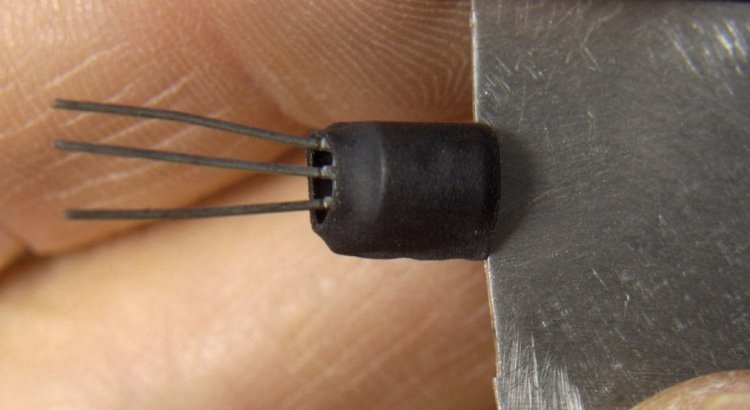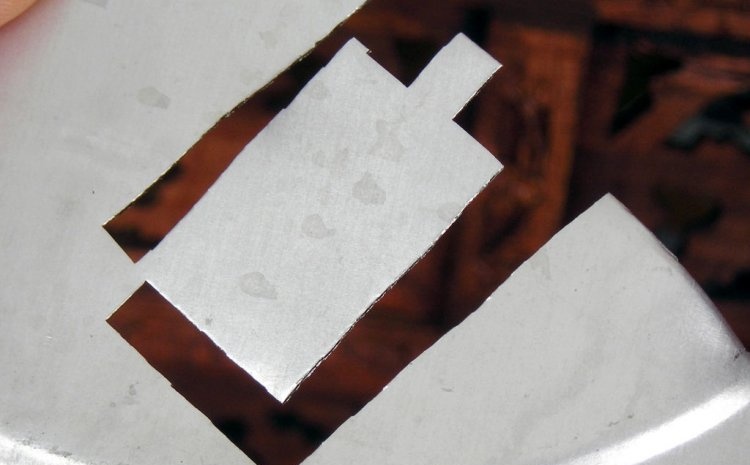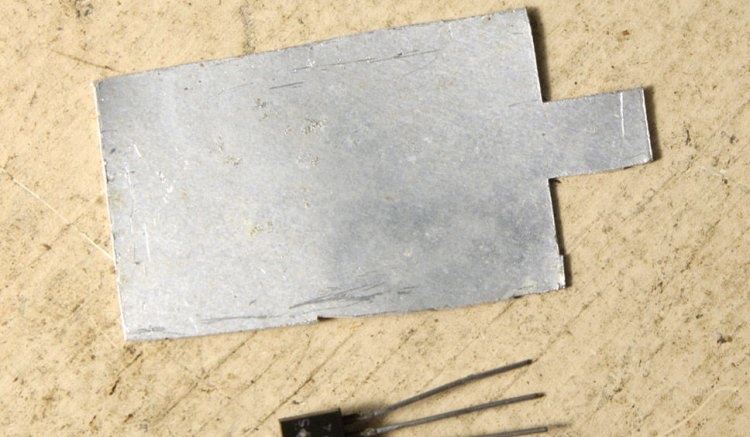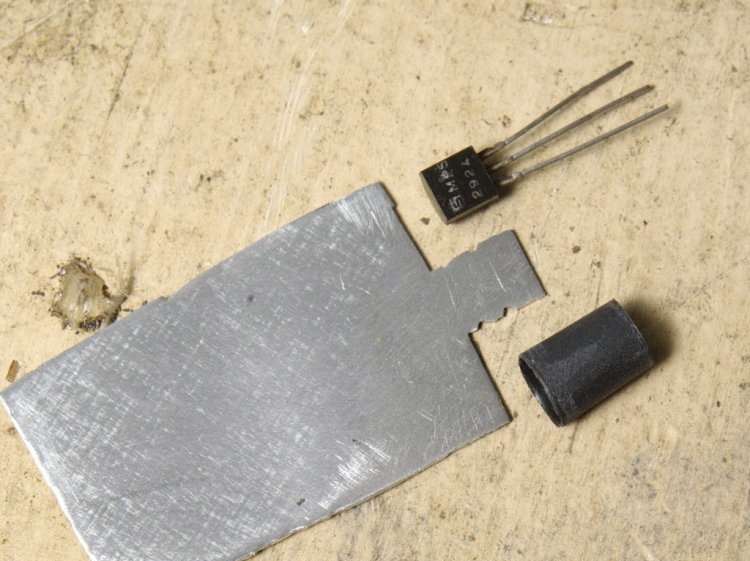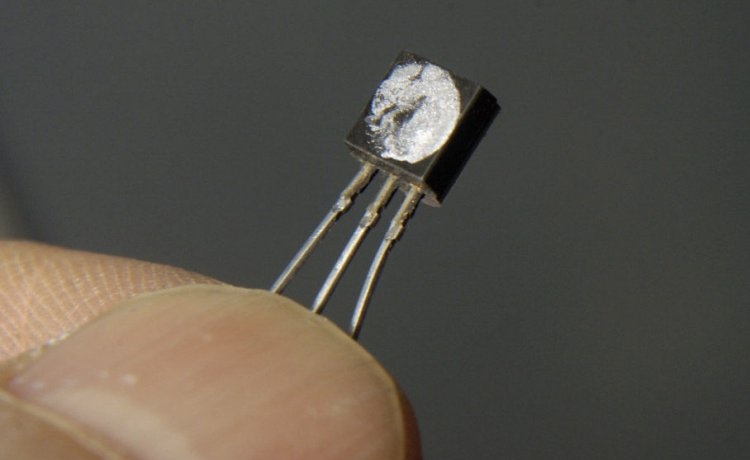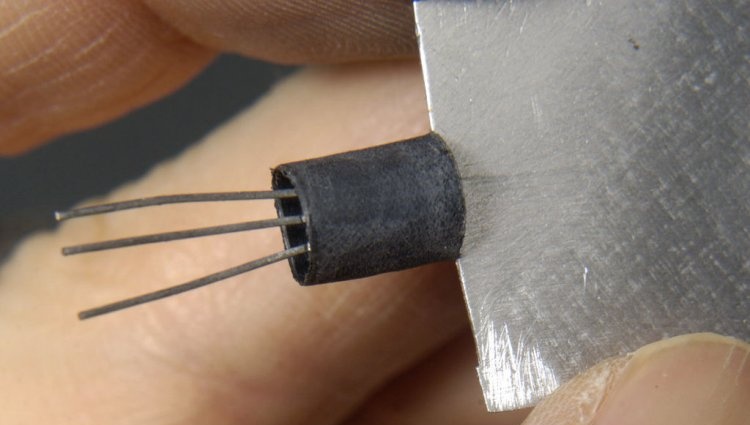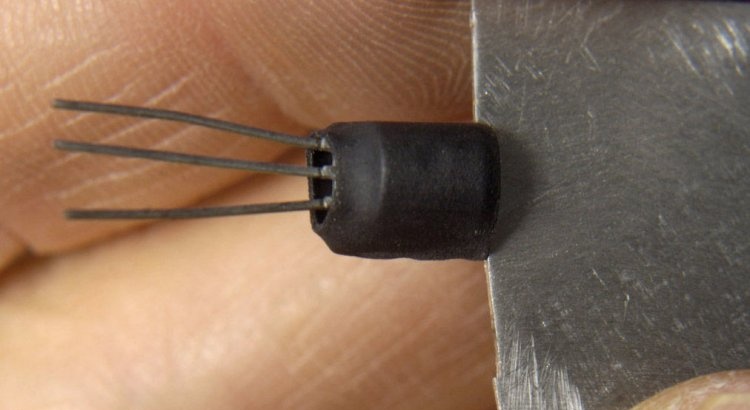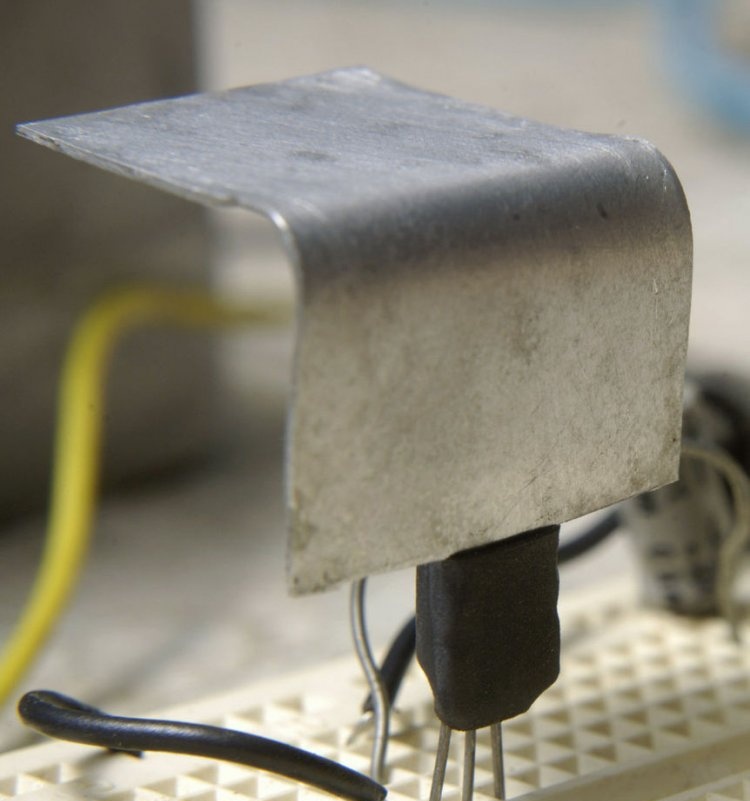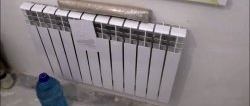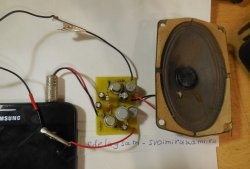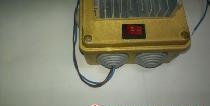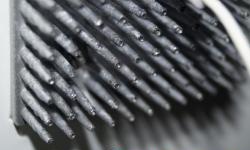Radiator for low-power transistors
Over many years of amateur radio activity, I have encountered different situations. For example, you need a slightly more powerful transistor than is available. Getting out of this situation is not very difficult. It is enough to add a radiator to such a transistor and its power will increase. After all, as a rule, low-power transistors mainly burn due to overheating and their power is therefore strictly limited.
I also very often encountered such a situation when a manufacturer of various electronics overclocks low-power transistors to the limit, as a result they heat up a little. This tactic is not reliable and sooner or if the weak link is discovered, it will make itself known.
To avoid this and get out of a difficult situation, I will show you how to make a radiator for small transistors.
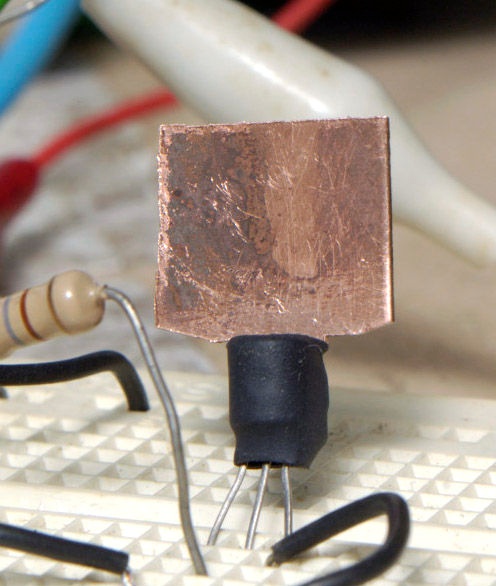
To do this, we cut out a radiator from a piece of tin, or better yet aluminum.
This is what it all looks like.
If there are sharp edges, clean them with sandpaper.
We also need heat-conducting paste and a piece of heat-shrink tubing.
So, assembly. We coat the transistor with paste, the side that will be adjacent to the radiator.
We put the tube on the radiator and insert the transistor.
Blow the heat shrink with a hairdryer.
The radiator is ready.It can be bent.
As a result of such a simple modification, the transistor power almost doubled from 0.5-0.8 W to 1.2-1.8 W.
To prove excellent performance, I installed a transistor with a heatsink at a power of 2.75 W. It worked without problems, with low heat, for 3 hours and did not burn out.
Of course, this method will help you out, but if you have the opportunity to install more powerful transistors that are designed to fit on a radiator, then choose them.
I also very often encountered such a situation when a manufacturer of various electronics overclocks low-power transistors to the limit, as a result they heat up a little. This tactic is not reliable and sooner or if the weak link is discovered, it will make itself known.
To avoid this and get out of a difficult situation, I will show you how to make a radiator for small transistors.

To do this, we cut out a radiator from a piece of tin, or better yet aluminum.
This is what it all looks like.
If there are sharp edges, clean them with sandpaper.
We also need heat-conducting paste and a piece of heat-shrink tubing.
So, assembly. We coat the transistor with paste, the side that will be adjacent to the radiator.
We put the tube on the radiator and insert the transistor.
Blow the heat shrink with a hairdryer.
The radiator is ready.It can be bent.
As a result of such a simple modification, the transistor power almost doubled from 0.5-0.8 W to 1.2-1.8 W.
To prove excellent performance, I installed a transistor with a heatsink at a power of 2.75 W. It worked without problems, with low heat, for 3 hours and did not burn out.
Of course, this method will help you out, but if you have the opportunity to install more powerful transistors that are designed to fit on a radiator, then choose them.
Similar master classes
Particularly interesting

Cable antenna for digital TV in 5 minutes
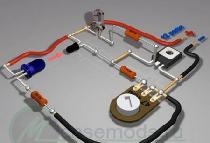
A selection of simple and effective schemes.
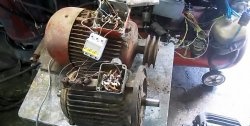
Three-phase voltage from single-phase in 5 minutes
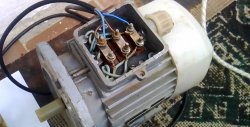
Starting a three-phase motor from a single-phase network without a capacitor

Eternal flashlight without batteries
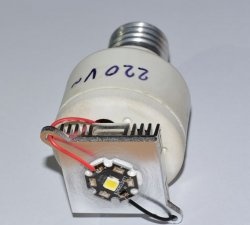
How to make an inexpensive but very powerful LED lamp
Comments (1)

